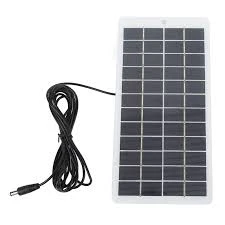solar panels on truss roof
Solar Panels on Truss Roofs Harnessing Sustainable Energy Efficiently
In the realm of sustainable construction, integrating solar energy solutions has become an essential focus for architects, builders, and environmentalists alike. Among the innovative ways to install solar panels, utilizing truss roofs presents unique advantages, marrying efficiency with sustainability. This article explores the benefits, design considerations, and future prospects of incorporating solar panels on truss roofs.
Understanding Truss Roofs
A truss roof utilizes a framework of trusses—triangular units that provide support for the roof structure. This design not only allows for greater spans of open space beneath the roof but also enhances the overall strength and stability of the building. Trusses can be made from various materials, including wood and metal, and can be tailored to suit different architectural needs. Their lightweight yet robust nature makes them an ideal base for solar panel installation, as they can support the additional load without compromising structural integrity.
Benefits of Solar Panels on Truss Roofs
1. Optimal Placement for Solar Gain Truss roofs often have a slope, which allows for excellent sun exposure, especially in regions that receive ample sunlight. By mounting solar panels on these sloped surfaces, builders can maximize energy capture throughout the day, significantly improving the photovoltaic system’s efficiency.
2. Weight Distribution The design of trusses allows for an even distribution of weight across the roof. This is particularly beneficial when installing solar panels, as it minimizes the risk of structural stress or collapse. Properly engineered truss roofs can accommodate the added weight of solar panels and their mounting systems without compromising safety.
3. Aesthetic Integration Integrating solar panels into the design of a truss roof can enhance the building’s aesthetic appeal. Modern solar panels come in various designs and can be installed in ways that complement the architectural style of the building. This not only serves to beautify the structure but also promotes the use of renewable energy in a visually appealing manner.
4. Space Optimization Truss roofs often provide significant surface area, which can be fully utilized for solar panel installation. This is particularly useful in urban environments where ground space is limited. Elevating solar panels on the roof allows for dual usage of space—generating energy while maintaining its functional aspects.
solar panels on truss roof

5. Cost-Effectiveness Installing solar panels on existing truss roofs can be more cost-effective than other installation methods. It often requires minimal alteration to the existing structure, reducing labor and material costs. Additionally, the energy savings gained from solar energy can lead to long-term financial benefits.
Design Considerations
While the integration of solar panels on truss roofs is advantageous, there are several design considerations to ensure an effective installation
- Load-Bearing Capacity Before installation, it is crucial to evaluate the truss roof’s load-bearing capacity. A structural engineer should assess whether the existing trusses can support the weight of the solar panel system, including any potential additional loads from wind or snow.
- Orientation and Angle The placement of solar panels should be optimized for angle and orientation to capture maximum sunlight. Engineers and solar installation professionals often use software tools to calculate the ideal position based on geographical location and roof pitch.
- Ventilation and Drainage Proper ventilation beneath the solar panels is essential to prevent heat buildup, which can decrease efficiency. Additionally, ensuring that water can drain off the roof surface without obstruction is crucial to maintain the integrity of both the roof and the solar panels.
Future Prospects
As the world moves toward a more sustainable future, the incorporation of solar panels on truss roofs is likely to become increasingly common. Advances in solar technology, such as improved efficiency and aesthetic options like building-integrated photovoltaics (BIPV), will further enhance their appeal. Moreover, incentives and regulations supporting renewable energy will encourage more builders to consider solar integrations in their designs.
In conclusion, the application of solar panels on truss roofs represents a significant opportunity to enhance energy efficiency and sustainability in modern construction. With the perfect blend of design, functionality, and aesthetic appeal, this approach can lead to reduced energy costs, minimized carbon footprints, and a more sustainable future. As technology continues to evolve, the partnership between architecture and renewable energy will only grow stronger, paving the way for a cleaner, greener world.
-
Unlocking Energy Freedom with the Off Grid Solar InverterNewsJun.06,2025
-
Unlock More Solar Power with a High-Efficiency Bifacial Solar PanelNewsJun.06,2025
-
Power Your Future with High-Efficiency Monocrystalline Solar PanelsNewsJun.06,2025
-
Next-Gen Solar Power Starts with Micro Solar InvertersNewsJun.06,2025
-
Harnessing Peak Efficiency with the On Grid Solar InverterNewsJun.06,2025
-
Discover Unmatched Efficiency with the Latest String Solar InverterNewsJun.06,2025







